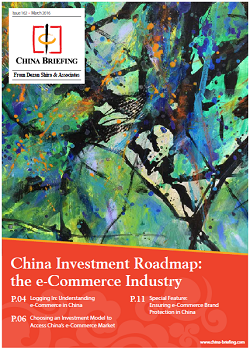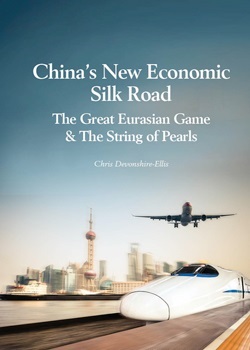China Close to Signing Free Trade Agreement with Eurasian Economic Union
China is getting very close to signing off a free trade agreement with the Eurasian Economic Union (EAEU), Russia’s First Deputy Prime Minister Igor Shuvalov said in an interview on Monday with the Moscow-based Rossiya24 TV channel.
Shuvalov’s comments will raise hopes that the agreement will see tariffs on Chinese goods either be significantly reduced or lowered to zero on thousands of items entering the EAEU, a trade bloc that includes Russia, Belarus, Armenia, Kazakhstan and Kyrgyzstan, as well as reductions for goods entering China.
![]() RELATED: China Lays Foundation for Eurasian Free Trade after TPP Failure
RELATED: China Lays Foundation for Eurasian Free Trade after TPP Failure
“This agreement is a game-changer and is a significant step forward in China’s One Belt, One Road ambitions,” says Chris Devonshire-Ellis of Dezan Shira & Associates. “It will essentially bring Chinese goods, duty free, right to the borders of the European Union. There are significant opportunities for European Asian-focused businesses in repackaging, warehousing, distribution, and logistics in dealing with this influx. China’s Silk Road ambitions also include supplying its own massive domestic market from European-based manufacturers. EU businesses should be looking at getting their products onto Chinese portals and selling to China online. 500 million middle class Chinese consumers buy products from overseas, and the OBOR routes are a huge opportunity for European producers to wake up and get prepared to service that market from their own factories.”
The China-EAEU FTA is expected to closely follow the Vietnamese agreement that was signed off in mid 2015. A complimentary, English language translation of that agreement, some 1,300 pages, can be found on the Dezan Shira & Associates FTA archives section of their website here.
![]() RELATED: The Eurasian Economic Union – About to Bring China to the EU’s Borders
RELATED: The Eurasian Economic Union – About to Bring China to the EU’s Borders
“Of particular interest in the Vietnam-EAEU FTA are tariff decreases in agricultural and automotive products, although the content covers thousands of items and is well worth studying for industry specifics,” says Devonshire-Ellis. “The China FTA is as much about supplying China from Russia and potentially from the EU as it is getting Chinese goods to Europe. There are also significant opportunities for investors into Russia and Belarus in terms of handling goods destined for either the EU or back to China. Countries such as Estonia and Finland are already preparing for this. The China-Russia trade corridor is a hot place to be and businesses from across the Eurasian region should be looking at servicing that,” concludes Devonshire-Ellis.
Dezan Shira & Associates maintains a significant presence in China with 12 offices in the country as well as a Russian desk, European desks in Italy and Germany, and a presence in Moscow.
|
China Briefing is published by Asia Briefing, a subsidiary of Dezan Shira & Associates. We produce material for foreign investors throughout Asia, including ASEAN, India, Indonesia, Russia, the Silk Road, and Vietnam. For editorial matters please contact us here, and for a complimentary subscription to our products, please click here. Dezan Shira & Associates is a full service practice in China, providing business intelligence, due diligence, legal, tax, IT, HR, payroll, and advisory services throughout the China and Asian region. For assistance with China business issues or investments into China, please contact us at china@dezshira.com or visit us at www.dezshira.com
|

 China Investment Roadmap: the e-Commerce Industry
China Investment Roadmap: the e-Commerce Industry
In this edition of China Briefing magazine, we present a roadmap for investing in China’s e-commerce industry. We provide a consumer analysis of the Chinese market, take a look at the main industry players, and examine the various investment models that are available to foreign companies. Finally, we discuss one of the most crucial due diligence issues that underpins e-commerce in China: ensuring brand protection.
 Establishing a Foreign Business in Russia
Establishing a Foreign Business in Russia
In this issue of Russia Briefing, we explain the basics of business set up for foreign investors, from trademark registration, representation, trading mechanisms, and manufacturing. With low corporate tax rates, Russia is set to become the most dynamic of the trade corridors opening up to Asia.
 China’s New Economic Silk Road
China’s New Economic Silk Road
This unique and currently only available study into the proposed Silk Road Economic Belt examines the institutional, financial and infrastructure projects that are currently underway and in the planning stage across the entire region. Covering over 60 countries, this book explores the regional reforms, potential problems, opportunities and longer term impact that the Silk Road will have upon Asia, Africa, the Middle East, Europe and the United States.
- Previous Article China’s Inbound and Outbound FDI Goals
- Next Article A China-US Trade War: Good News for Asia









